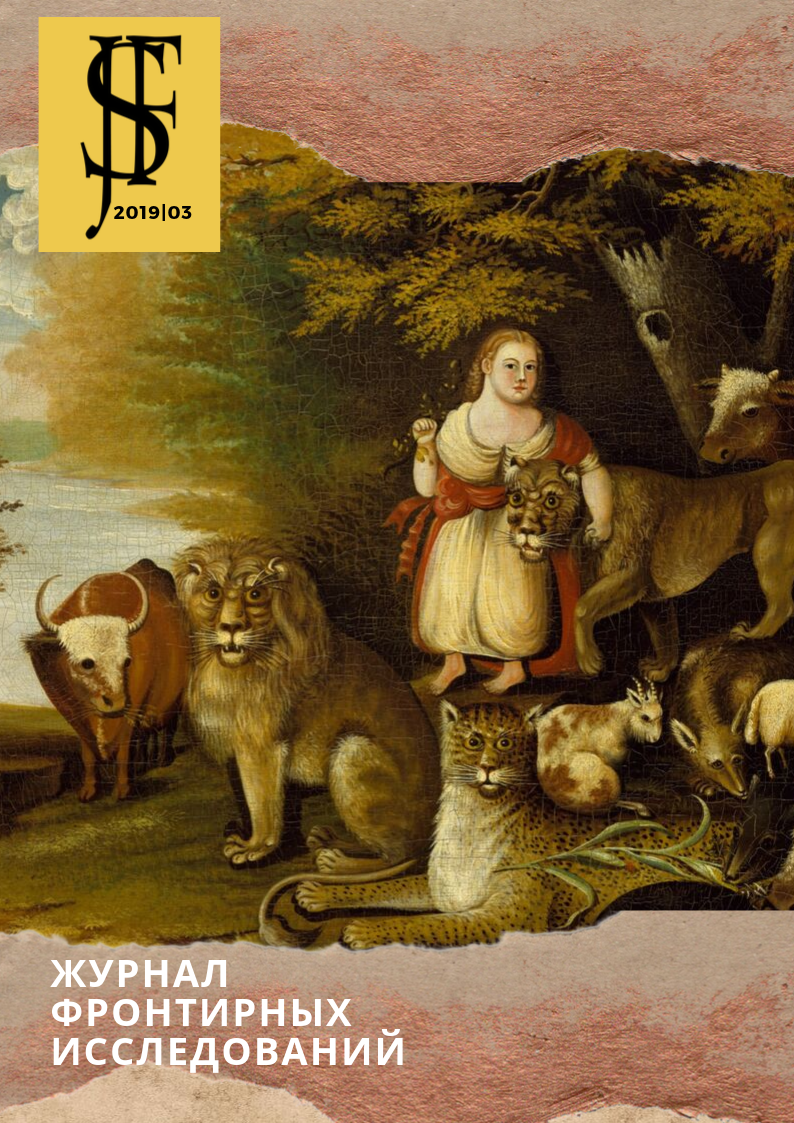Abstract
The article investigates the problems of marriage in the Old Belief, the Russian phenomenon, initiated by religious reforms of Tsar Alexei Mikhailovich and Patriarch Nikon. The state oppression of the Old Believers reached such an extent that even the most private and personal aspects of life of the Old Orthodox were strictly regulated and accompanied by a mass of oppressions. The government and the ruling Orthodox Church quite consciously and consistently pursued a policy of denying the Old Believers the legitimacy of their marriages, prohibiting marriage according to the old, Pre-Nikon rites and the introduction of their own metric books. In different historical periods, from the reign of Peter the Great to the Decree of Alexander II in 1874, the marriage between the Old Believers was subject to duties and fines or equated to a criminal act, including for not informing about that. This practice led to numerous abuses and corruption: bigamy, denial of inheritance rights, recognition of heirs and widows as legal heirs. The position of the Orthodox Church regarding its views on the institution of the family led to the need to separate the civil and religious elements in the marriage. On the other hand, irreconcilable contradictions in matters of marriage and family law most often gave rise to various Old Believers’ and sectarian groups. The most common forms of marriage in the largest Old Believers’ communities, the Popovtsy and Bezpopovtsy are analyzed. The most common way to marry Old Believers was the so-called «ukhod», «uvod», «tikhomatniy marriage», or «samokrutka», which consisted in the escape of the bride to the groom and the subsequent marriage in the Orthodox Church, with the imposition of community or family epithemium later. Among the Bespopovtsy, particularly the Fedoseevtsy there were a great variety of forms of family life, from complete celibacy among the Beguny to promiscuity in the Moscow Preobrazhenskaya community. In 1874, Alexander II signed the metric rules, according to which the Old Believers' marriages were recognized, and children born in such marriages were considered legal.
References
Borovikovsky, A. (1873). On the family law of the schismatic. Journal of Civil and Criminal Law: July, (4), pp. 142-174. (In Russian)
Complete collection of resolutions and instructions on the department of Orthodox Christianity of the Russian Empire. Collection of resolutions on the schism. Vol. III, 1723. (1875). St. Petersburg: Synodal'naya typography. (In Russian)
Ecclesiastical Vestnik (1886). (6), 102. (In Russian)
Etkind, A. M. (2013). The Khlists: Sects, Literature and the Revolution. M.: NLO. (In Russian)
Full collection of laws of the Russian Empire since 1649. Volume VI. 1720-1722. (1830). Typography II Otdeleniya Sobstvennoy Ego Imperatorskago Velichestva Kancellarii. (In Russian)
Gomolitsky, S.B. (1901). Marriage of schismatics according to the Act of April 19, 1874. Vestnik Prava. Zhurnal Yuridicheskogo Obshchestva pri Imperatorskom St. Petersburgskom Universitete, (4-5), 139-180. (In Russian)
Kozhurin, K.I. (2017). Daily life of the Old Believers. M.: Molodaya Gvardia. (In Russian)
Kozlov M. (2011). Marriage between Orthodox and Catholics: a vision of the pastoral aspect of the problem in Russia at the beginning of the XXI century. Russian national line. Retrieved from: https://ruskline.ru/monitoring_smi/2011/01/ 13/braki_mezhdu_pravoslavnymi_i_katolikami_videnie_pastyrskogo_aspekta_problemy_v_rossii_nachala_xxi_veka/ (In Russian)
Livanov, F.V. (1868-1875). Raskolniki and ostrozhniki: Essays and stories. Vol. 1. St. Petersburg: typ. Dr. M. Khana. (In Russian)
Melnikov, P.I. (1987). In the Forests. On the Mountains. In four books. Vol. 2. M.: Pravda. (In Russian)
Nikonov, V.V. (2008). The Latgalian Old Beliefs: Essays on the history of the Old Believers' societies in Regitsa and Lutsina counties (2nd half of the 17th - 1st half of the 20th cc.). Ed. of Rezekne cemetery of the Old Believers' community. (In Russian)
Nilsky, I. (1869). Family life in the Russian schism. Historical sketch of the schismatic doctrine of marriage. The second issue (reign of Emperor Nicholai I). Spb.: Typography Departmenta Udelov. (In Russian)
Orshansky, I.G. (1874). Reform of the church court and the marriage law. Zhurnal Grazhdanskogo i criminal'nogo prava. Book 1(1-2), 115-184. (In Russian)
Orshansky, I.G. (1877). About marriage of schismatics. Zhurnal Grazhdanskogo i criminal'nogo prava: January and February, (1), 157-239. (In Russian)
Orshansky, I.G. (1879). Studies on Russian customary and marriage law. St. Petersburg: Typography by A.E. Landau. (In Russian)
Paert, I. (2004). Regulating Old Believer Marriage: Ritual, Legality, and Conversion in Nicholas I's Russia. Slavic Review, 63(32004), 555-576.
Rosenblum, V. (1895). Penalty of bigamy among schismatics. Journal of the Law Society: March, (3), 35-42. (In Russian)
Smirnov, P. S. (1885). Brotherly Word. T.I. St. Petersburg. (In Russian)
Smirnov, P.S. (1863). Christian Reading. T. II. St. Petersburg. (In Russian)
Smirnov, P.S. (1892). Brief historical sketch of the Bezpopovtsy. Missionerskiy sbornic, (3-4), 7-8. (In Russian)
Smirnov, P.S. (1895). History of the Russian schism of the Old Believers. St. Petersburg: Typographiya Glavnogo Upravleniya Udelov. (In Russian)
Suvorov, N.S. (2015). Civil marriage. M.: LANAND: URSS (In Russian)
Vakhromeeva, O. B. (2017). The role of women in the family union in pre-revolutionary Russia. Actual problems of humanities and natural sciences, (1-2), pp. 7-15. (In Russian)
Vereshchagin, N.N. (1885). On the issue of registration of divisive marriages. Yuridichesky Vestnik: October, (10), 288-303. (In Russian)
Werth, P. (2012). Orthodoxy, Non-Orthodoxy, Non-Belief: Essays on the History of Religious Diversity of the Russian Empire. Moscow: NLO. (In Russian)
Zenkovsky, S.A. (2009). The Russian Old Believers. In 2 vols. M.: DI-DIK, Quadriga. (In Russian)

This work is licensed under a Creative Commons Attribution-NonCommercial-NoDerivatives 4.0 International License.

